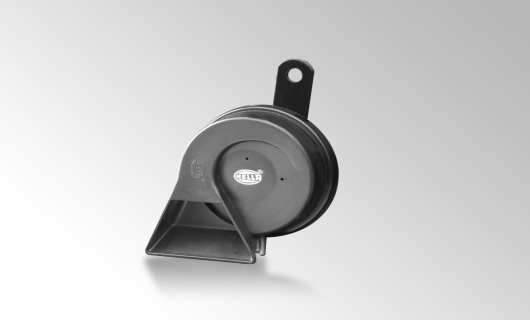Electronic horns are used on vehicles to give out warning signals generated by an electronic circuit. A solenoid is magnetized and demagnetized to produce the fundamental frequency and cause the diaphragm to vibrate. This generates high pressure that passes through the trumpet horn to generate a sound. A key advantage of electronic horns is their lack of wear, resulting in average lifetimes ten times higher than with electromechanical horns.
FUNCTIONS AND FEATURES
- A range of horn sizes are available, depending on the application
- Diameter of 80 mm, 90 mm, or 123 mm
- Battery voltage of 12 V, 24 V, 36 V, 48 V, or 80 V
- A range of connections and fixing brackets available
TECHNICAL DATA


